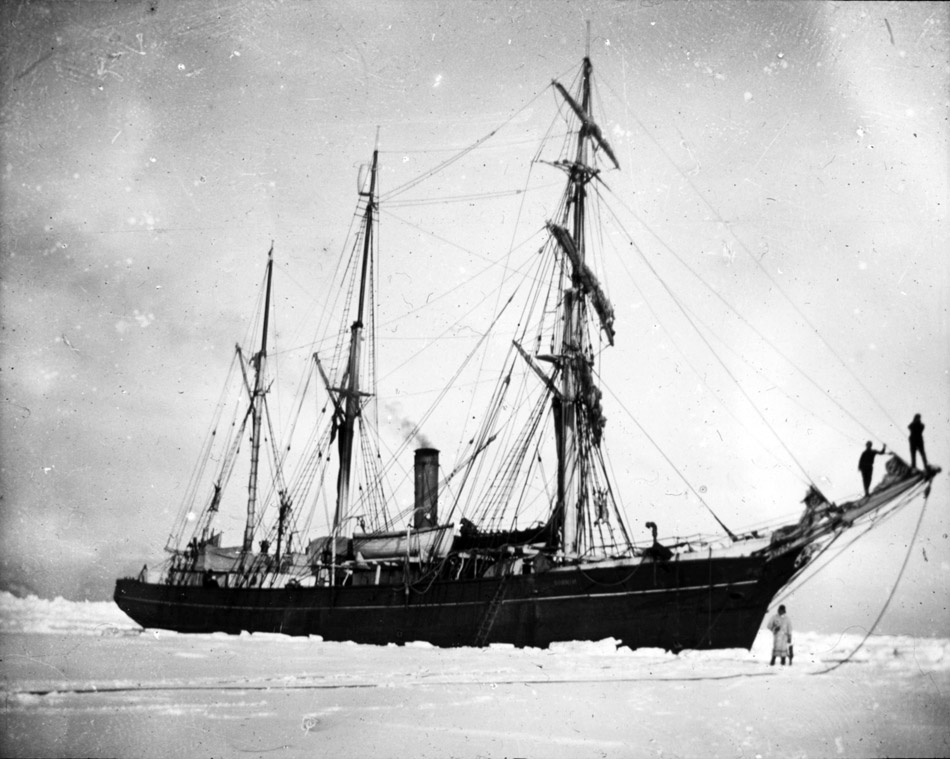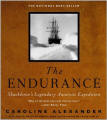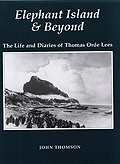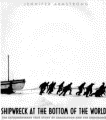British Antarctic Expedition, 1907-1909
Nimrod,
Ernest Shackleton
Crew of the Nimrod | Photographs-1 Photographs-2 | Paintings
Shackleton's second trip to Antarctica, his first as leader and his second attempt to reach the South Pole.
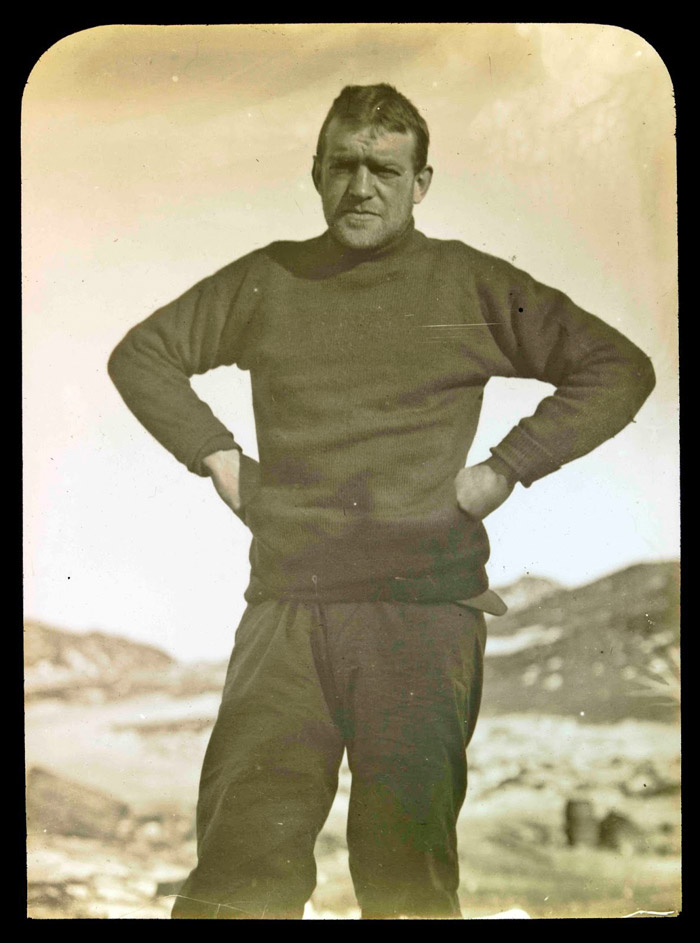
Ernest Shackleton - 1908
Ernest Shackleton led his first expedition to Antarctica on the Nimrod. One of the objectives of the journey was to reach the South Pole. It was the second time that he tried, the first being with Robert Scott on the Discovery expedition in 1902. On that occasion he had come to within 480 miles of the Pole, this time the distance reduced, but it was still to remain an elusive goal for Shackleton.
In the summer of 1900, Shackleton had volunteered for the National Antarctic Expedition that Robert Falcon Scott was in the process of arranging. He was accepted as third lieutenant in charge of holds, stores, provisions and deep sea water analysis and left on this expedition in 1901, the Discovery expedition.
This was not a successful voyage for Shackleton as he became ill with scurvy and though wanting to remain in the south had to be taken back home earlier than he wished on the relief ship Morning.
Shackleton was chosen to be leader of an expedition to leave for Antarctica in 1907 aboard the ship Nimrod, not the first choice of ship, but as in many Antarctic expeditions, one forced by the available budget. The Nimrod sailed initially for New Zealand on August 7th 1907.
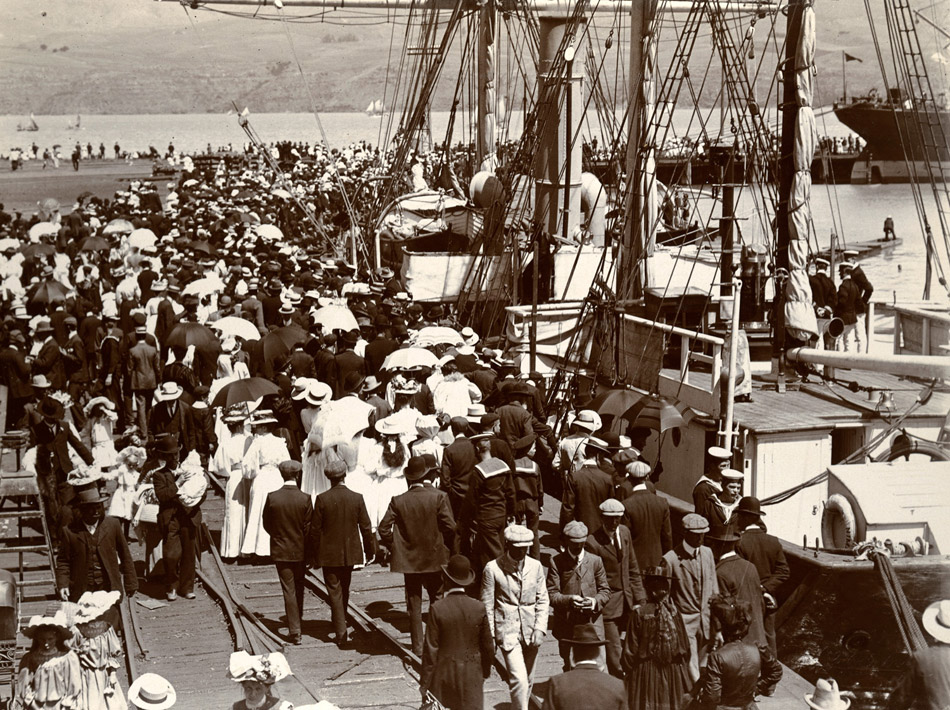
Crowd on Lyttelton wharf, New Zealand as the
Nimrod was leaving for Antarctica
From New Zealand, the Nimrod was towed by another vessel the Koonya in order to save coal that would be used at a great rate once the ship met pack ice. Douglas Mawson an Australian geologist had secured a place on the expedition and the subsequent journey to the South magnetic pole. On January 14th 1908, the an iceberg was sighted for the first time, shortly afterwards the Koonya cast her line off and the Nimrod sailed free and was now on her own.
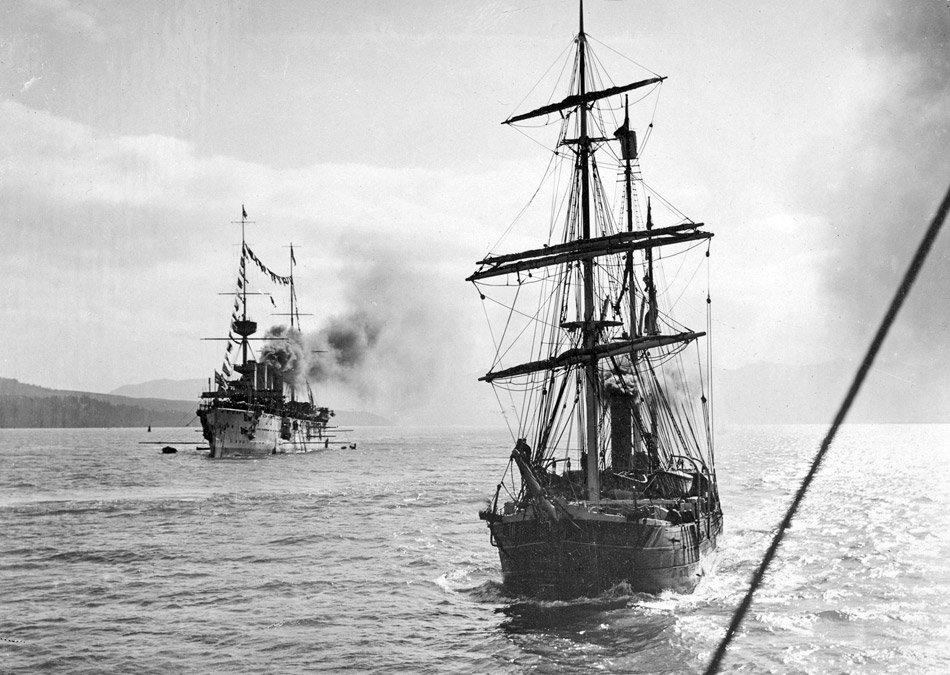
Nimrod (right) and H.M.S. Powerful (behind) the
flagship of the Australasian squadron, sailing in farewell out
of Lyttleton Harbour New Zealand, 1st January 1908
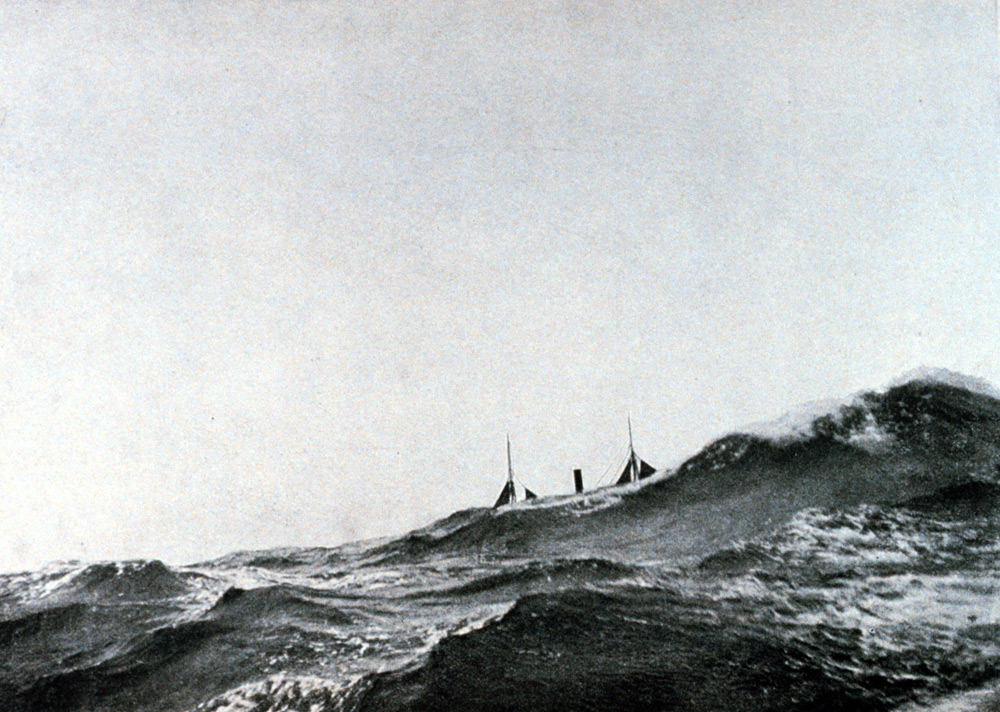 The Towing
Steamer Koonya as Seen from the Nimrod in a heavy sea
The Towing
Steamer Koonya as Seen from the Nimrod in a heavy sea
Men wanted for hazardous journey.
Low wages, bitter cold, long hours of complete darkness.
Safe return doubtful. Honour and recognition in event of
success.
From an advertisement - almost certainly
apocryphal and attributed both to Shackleton's Nimrod
and Endurance expeditions.
By necessity rather than design, the Nimrod entered McMurdo sound, the intended landing place (the Bay of Whales) being too congested with heavy pack ice and icebergs. She anchored to the sea ice edge some 16 miles from where the hut was to be erected at Hut Point, preparations were made for unloading, but this was delayed to allow the ice to break up further back to Hut Point. By February 3rd the ice had indeed broken back to Hut Point and so the Nimrod was fastened alongside the ice foot and unloading began.
Shackleton had brought ponies for transport and a motor car especially adapted for Antarctic conditions. The ponies did not fare well on the journey and were in poor condition, one had been injured and had to be shot during the journey, another was shot on arrival. The temperature was now consistently cold and below -20°C. The Nimrod left the landing party and headed back towards New Zealand on February 22nd.
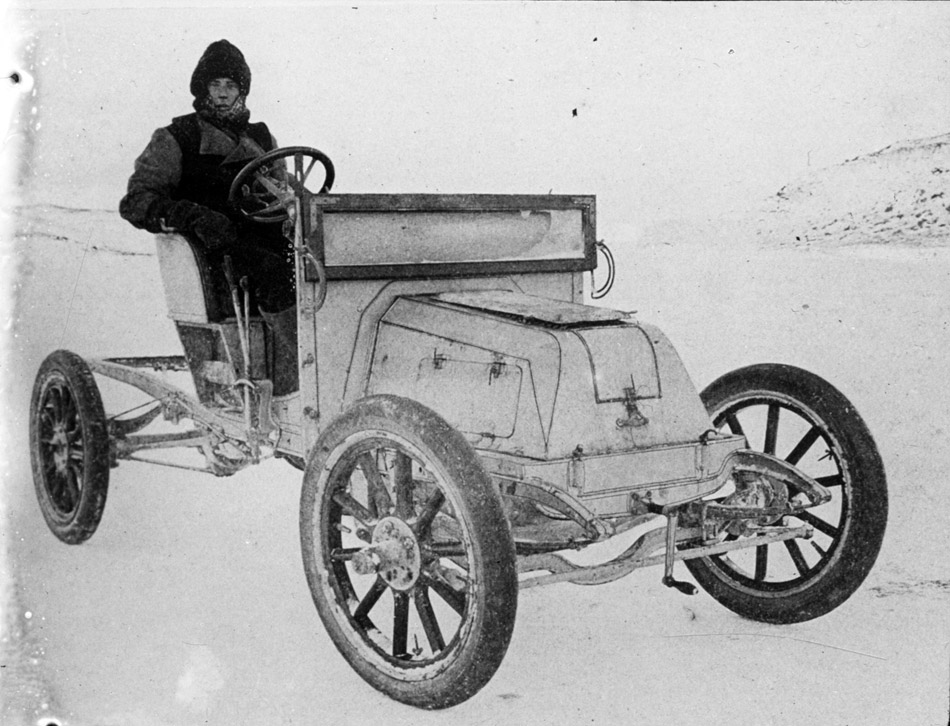
Day with the Motor-car on the sea ice
Day
was the mechanic with responsibility for the running of the
car
Scientific reading and observations began immediately, particularly meteorological and biological of the seas through cracks in the ice. A party of six succeeded in the first ascent of the 4,023m (13,200-ft) nearby active volcano Mount Erebus. The base then embarked on the mundane chores of winter life livening them with distractions wherever possible, but in the main life slowed and chores filled the time available, the cold and wind making even simple activities become much more involved and time consuming. There were of course tensions to be expected of such disparate characters living closely together
Come the spring the plans for sledging parties made over the winter started to be put into action. Shackleton, Adams, Marshall and Wild would head south for the Pole.
Another party led by Edgeworth David, (aged 50 at the time) with Mackay and Mawson would set out to reach the southern magnetic pole, itself a 1260 mile journey. This latter party had no experience of Antarctic exploration at all and did not have the help of dogs or ponies, they did however have the motor car taken on the expedition and used it to establish two depots, 10 and 15 miles from the winter base. Ironically the car suffered from overheating of the engine and the men had to wait in the cold for it to cool down again before it could run. They set out on September 25th 1908 and were soon running out of food, having to ration themselves quite strictly by early November. They soon learnt the lessons of Antarctica from brushes with disaster as each of the men and the sledge fell or nearly fell into ever present crevasses. Snow blindness sunburn and frostbite made travelling all the more difficult, but by January 15th 1909 they reached the southern magnetic pole, photographs were duly taken and the Union Flag hoisted.
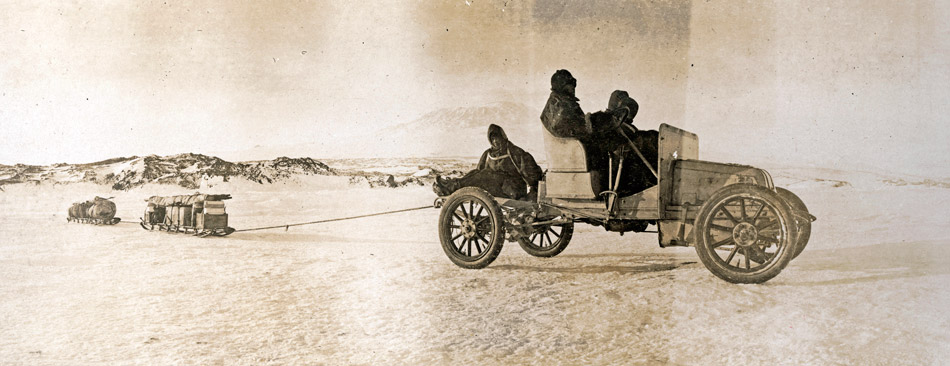
Motor hauling stores for a depot
The Nimrod
expedition was the first to take a recently invented motor-car
to Antarctica, it kept breaking down through over-heating and
getting stuck in even shallow snow.
"I hereby take possession
of this area now containing the Magnetic Pole for the British
Empire"
Edgeworth David
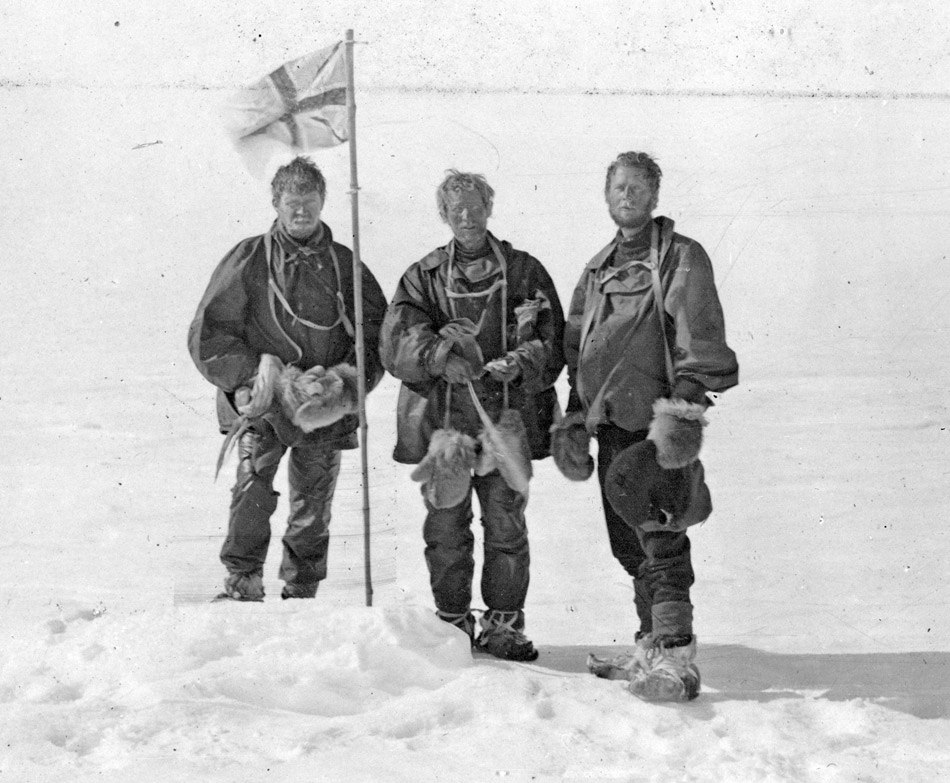
Alistair Mackay, Professor Edgeworth David and
Sir Douglas Mawson at the Magnetic South Pole
On the return journey they worked out that to reach the arranged depot and signal the Nimrod on time, they had to cover 17 miles per day from January 17th to February 5th. They were within a mile of the depot on February 5th when the Nimrod was heard signaling with a gun. By that afternoon, they were aboard the ship and luxuriating in the tea, food and being able to have a bath for the first time since September. David felt that had they had dogs, they could have completed the 1260 miles in half the time.
The polar party of Frank Wild, Ernest Shackleton, Eric Marshall, Jameson Adams led by Shackleton left on a fine day on October 29th 1908. "Only those who have experienced Antarctica directly can appreciate the feeling of exhilaration, and excitement that setting out on a journey on a fine day in the Antarctic spring can give."
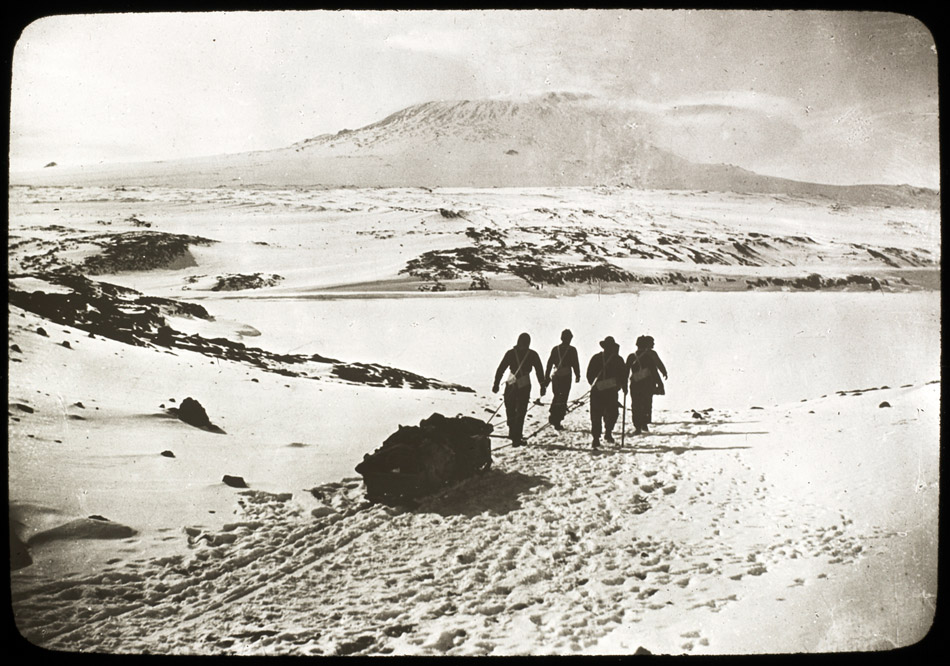
Manhauling towards Mount Erebus at the beginning
of the journey.
They had ponies on this journey, but they became weak and caused problems as much as they helped solve them. Adams was kicked under the knee and the bone exposed on the first day out. Rations were very short and the men soon became very hungry. The weakest pony was shot on November 21st, some of the meat eaten and the rest depoted. On November the 26th they passed the previous furthest south point reached by Robert Scott (a trip that Shackleton was also on) in 1902. A further two ponies were shot soon afterwards, this freed up some of the food and the men began eating pony maize.
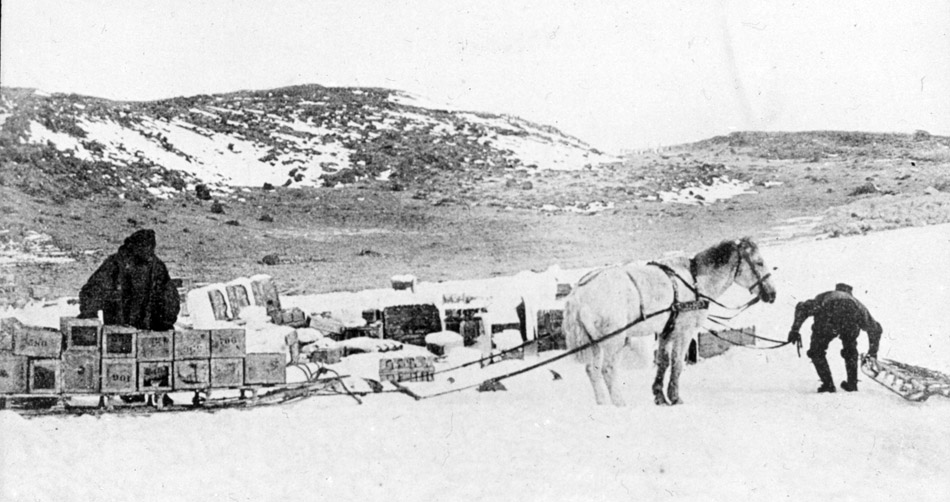
Preparing a sledge for hauling by pony
Christmas was celebrated with some carefully held back treats, plum pudding, brandy, cigars and a spoonful of creme de menthe each. By December 27th, they were on the polar plateau at an altitude of 10,200 feet with the wind against them, suffering from a lack of food and with hands and feet almost on the point of frostbite. Shackleton was aware of the worsening situation, knowing that they only had a limited time in the light of their rations and physical state. They battled southwards into blizzards, sometimes the blizzards kept them in their sleeping bags all day. On January 9th they reached their furthest south point of 88°23'S, just 97 miles from the pole. A flag was planted and photographs taken, they turned around and began to head for home.
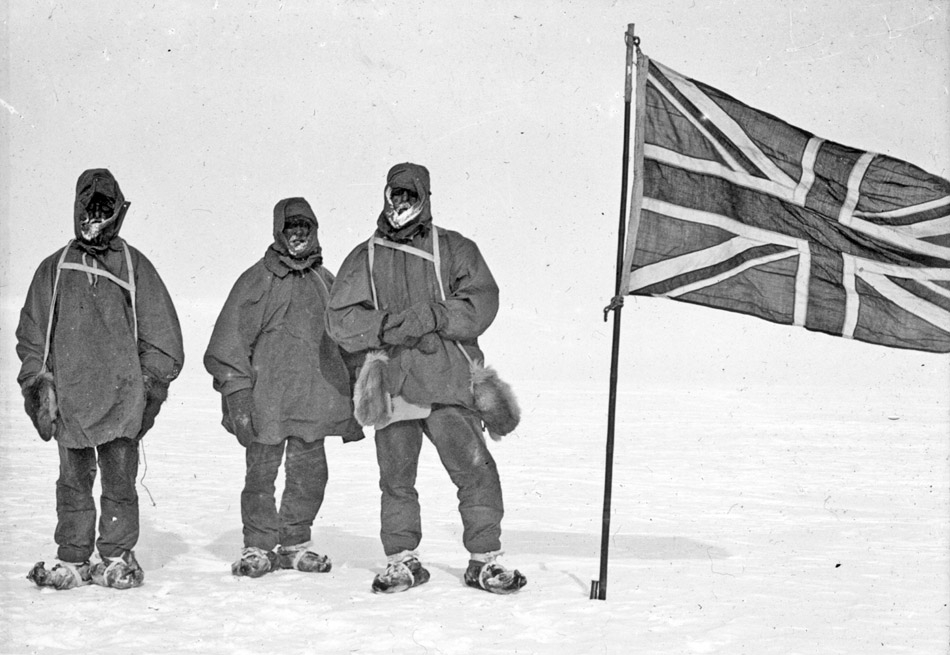
Furthest South, 97
miles from the South Pole, the point at which the party turned
round and headed for home.
I thought, dear, that
you would rather have a live ass than a dead lion.
Sir Ernest Shackleton in a letter to his
wife Emily, after deciding to turn back 97 miles from the
Pole.
On the journey back, the wind that they had battled against was behind them, they used a sail on the sledge and rushed across the ice making up to 29 miles a day. They were able to obtain food from the depots they had laid on the outward journey including the meat from the ponies and so by contrast to earlier weeks were well fed and relatively content. They reached Hut Point to find a note saying that the Nimrod was sheltering nearby, burning the magnetic hut to provide a signal summoned the Nimrod they were soon safe aboard. They had walked 1700 miles.
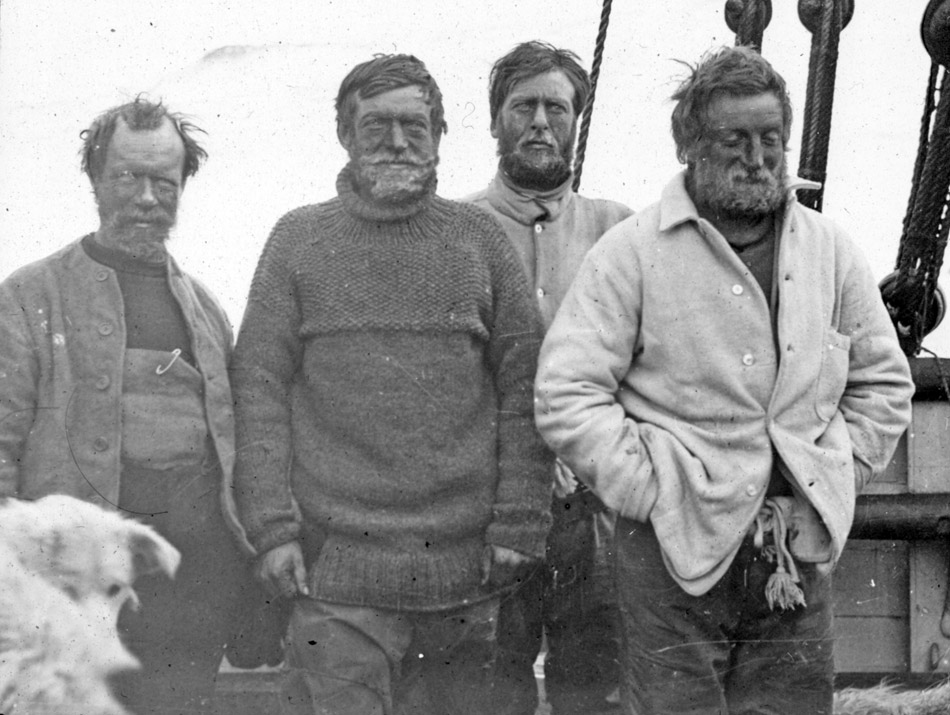
l-r, Frank Wild, Ernest
Shackleton, Eric Marshall, Jameson Adams. The four members of
the party that set out to attempt to become the first to reach
the South pole, they were defeated by the weather, but also
a lack of supplies and suitable equipment just 97 miles from
the South Pole, a point they reached on January the 9th 1909.
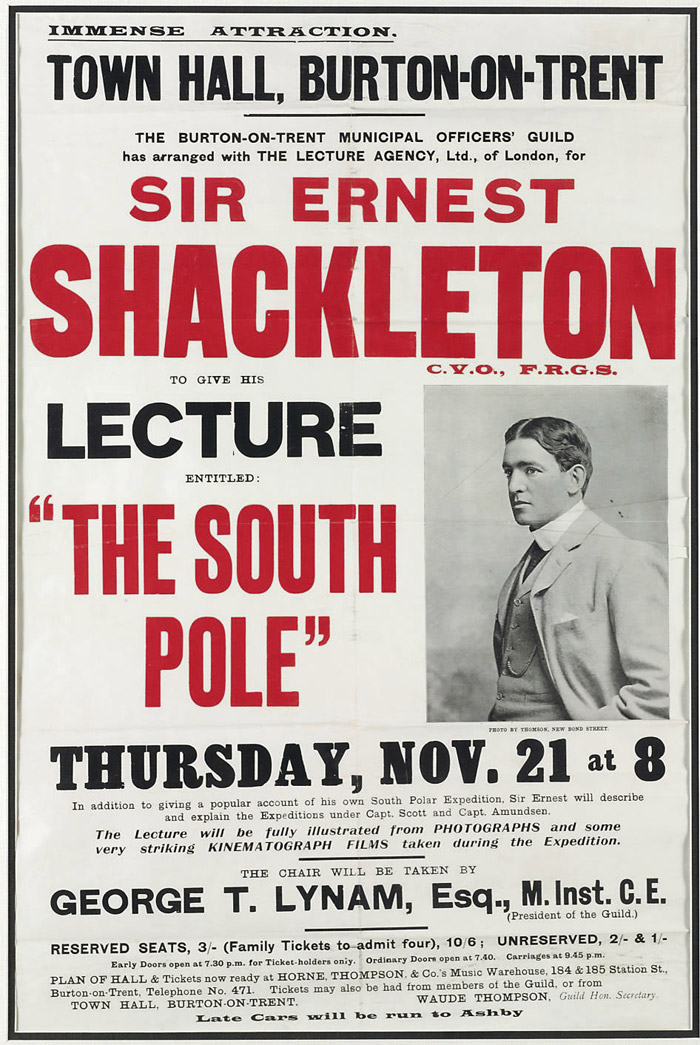
A poster for a public lecture to be given by
Shackleton on his return to England, such lectures were the
means by which money was raised to pay off the debts of expeditions
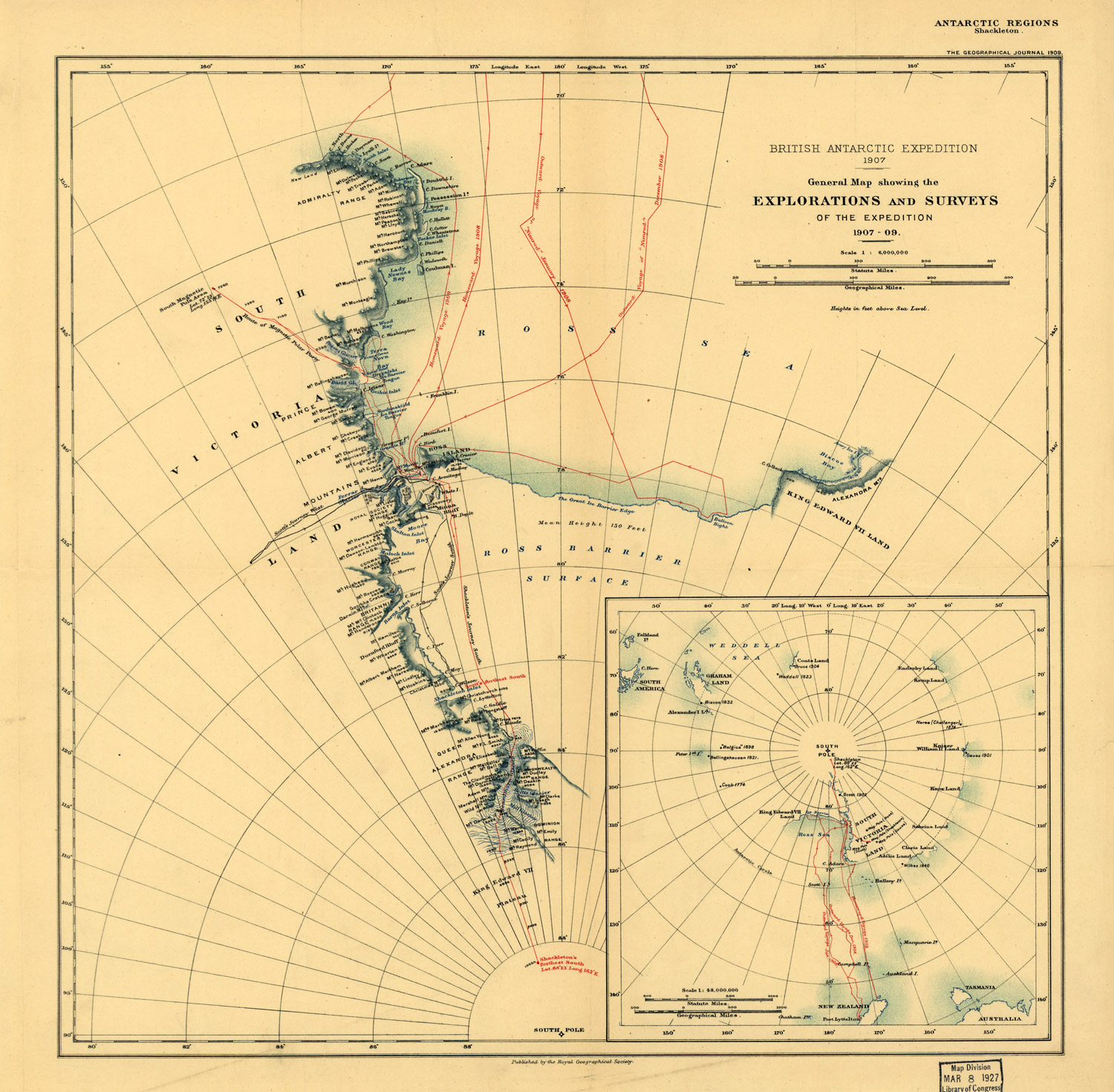
Map showing the explorations and surveys of the
expedition
Largest picture size, 4.3Mb
Ernest Shackleton Books and Video

South - Ernest Shackleton and the Endurance Expedition (1919)
original footage - Video

Shackleton
dramatization
Kenneth Branagh (2002) - Video

Shackleton's Antarctic Adventure (2001)
IMAX dramatization - Video

The Endurance - Shackleton's Legendary Expedition (2000)
PBS NOVA, dramatization with original footage - Video
Endurance : Shackleton's Incredible Voyage
Alfred Lansing (Preface) - Book
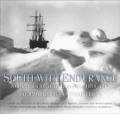
South with Endurance: Frank Hurley - official photographer
Book
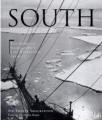
South! Ernest Shackleton Shackleton's own words
Book

Shackleton's Way: Leadership Lessons from the Great Antarctic Explorer
Book

